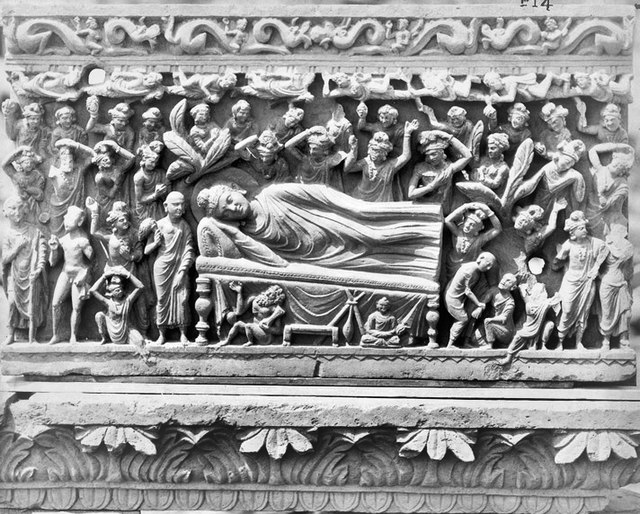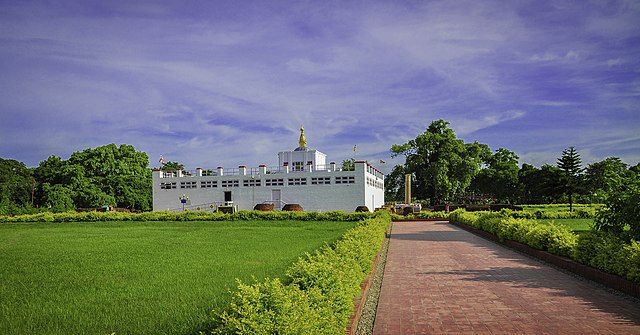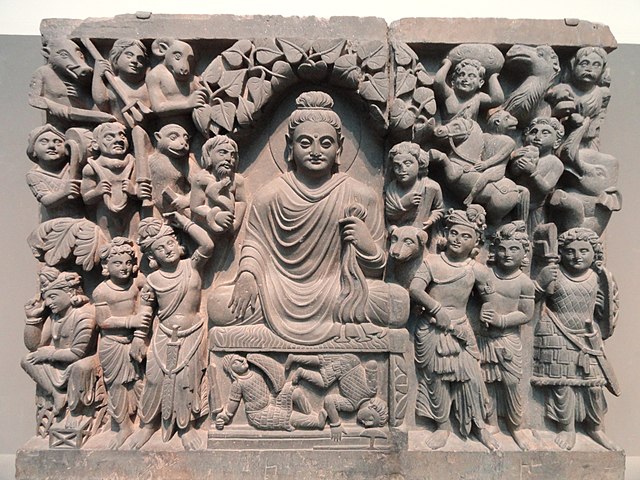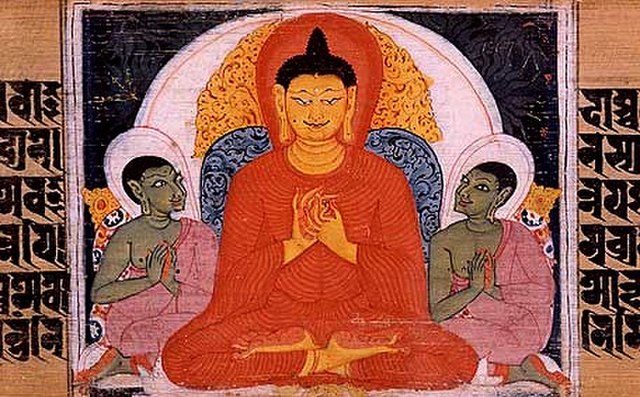Nirvana is the extinguishing of the passions, the "blowing out" or "quenching" of the activity of the grasping mind and its related unease. Nirvana is the goal of many Buddhist paths, and leads to the soteriological release from dukkha ('suffering') and rebirths in saṃsāra. Nirvana is part of the Third Truth on "cessation of dukkha" in the Four Noble Truths, and the "summum bonum of Buddhism and goal of the Eightfold Path."
Aniconic carving representing the final nirvana of a Buddha at Sanchi.
The Bhavachakra, an illustration of the cycle of rebirth, with the three poisons at the hub of the wheel.
In the cosmology of Jainism, which is a closely related sramana tradition, liberated beings abide in an actual realm (loka) or abode (sila) associated with nirvana. Some scholars have argued that early Buddhism held a similar view.
Buddhist sculpture of the final nirvana of the Buddha in greco-buddhist Gandharan style from Loriyan Tangai.
Buddhism, also known as Buddha Dharma and Dharmavinaya, is an Indian religion and philosophical tradition based on teachings attributed to the Buddha. It is the world's fourth-largest religion, with over 520 million followers, known as Buddhists, who comprise seven percent of the global population. Buddhism originated in the eastern Gangetic plain as a śramaṇa–movement in the 5th century BCE, and gradually spread throughout much of Asia via the Silk Road.
Mayadevi Temple marking the Buddha's birthplace in Lumbini
Enlightenment of Buddha, Kushan dynasty, late 2nd to early 3rd century CE, Gandhara
The Buddha teaching the Four Noble Truths. Sanskrit manuscript. Nalanda, Bihar, India
Traditional Tibetan Buddhist Thangka depicting the Wheel of Life with its six realms








